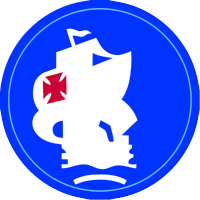United States Army South
United States Army South is the Army's service component command of
United States Southern Command
whose area of responsibility includes 31 countries and 15 areas of
special sovereignty in Central and South America and the Caribbean. It
is headquartered at
Fort Sam Houston,
Texas.
Mission
U.S. Army South (ARSOUTH) conducts and supports multinational operations and security cooperation in the
U.S. Southern Command area of responsibility in order to counter transnational threats and strengthen regional security in defense of the homeland.
[1]
History
U.S. Army South has existed under its current name since 1986, but its historical roots reach back much farther, to the
Isthmian Canal Commission
and the Panama Canal Guard of 1904–1914, both of which played a pivotal
role in the construction and early defense of the Canal.
[2]
On 6 June 1963, the United States Caribbean Command (the theater command) was re-designated as the
United States Southern Command,
to reflect primary responsibility in Central and South America, versus
the Caribbean. Meanwhile, the United States Army Caribbean was
re-designated the United States Army Forces Southern Command.
[6]
During the 1970s, the troop strengths averaged between 10,000 and 14,000 soldiers. Implementation of the
Panama Canal Treaties of 1977
on 1 October 1979, brought with it the following changes: a new
arrangement for the defense of the Panama Canal; the disestablishment of
the Canal Zone; a change in designation for the brigade to
193rd Infantry Brigade
(Panama), resulting in the beginning of the process of reorganizing
from a heavy to a light infantry brigade; and a headquarters move from
Fort Amador to
Fort Clayton.
On 4 December 1986, the United States Army South was activated as a
Major Army Command and the Army component of United States Southern
Command, with Headquarters at Building 95, Fort Clayton.
Operation Just Cause, the United States military action used to depose Panamanian dictator, General
Manuel Antonio Noriega,
was officially conducted from 20 December 1989 to 31 January 1990.
United States Army South Headquarters became the Headquarters for
Joint Task Force-South, the Headquarters designated to execute the operation. During the
Panama Invasion
the total troop numbers increased to 27,000. Of these, 13,000 were
already stationed in Panama and 14,000 were flown in from the United
States.
[7]
As part of a Unified Command Plan change, United States Southern
Command also assumed geographic responsibility for U.S. military forces
operating in the Caribbean Basin and the Gulf of Mexico on 1 June 1997.
Within this framework, United States Army South's geographical area of
responsibility expanded to now include today, 31 countries and 15 areas
of special soverignty in Latin America and the Caribbean, except Puerto
Rico and Mexico. In 1998, United States Army South units participated in
15 platoon exchanges at the Jungle Operation Training Center with
soldiers from Belize, Colombia, Venezuela, El Salvador, Chile,
Argentina, and Paraguay.
As part of a larger Army transformation in response to the demands of
post-9/11 operations worldwide, U.S. Army South merged with U.S. Army
South (
Sixth Army)
on 16 July 2008, a change that expanded its size and capabilities to
include an Operational Command Post (OCP) that could serve as the
nucleus of a
Joint Task Force
(JTF) or Joint Forces Land Component Command (JFLCC) headquarters
anywhere in the U.S. Southern Command Area of Responsibility. In
addition, U.S. Army South incorporated the lineage and hearldry from
Sixth U.S. Army. While U.S. Army South received an exception to policy
from the Army Chief of Staff to retain its distinctive Spanish galleon
insignia, its colors were merged with 6th Army’s to mark the new,
combined lineage and hearldry of the two historic organizations—one that
played a pivotal role in the security of the Panama Canal and the
broader region of Latin America and the Caribbean, and one that fought a
series of famous battles in the Pacific theater of the Second World
War.
[8]
References
- Mellander, Gustavo A.; Nelly Maldonado Mellander (1999). Charles
Edward Magoon: The Panama Years. Río Piedras, Puerto Rico: Editorial
Plaza Mayor. ISBN 1-56328-155-4. OCLC 42970390.
- Mellander, Gustavo A. (1971). The United States in Panamanian
Politics: The Intriguing Formative Years. Danville, Ill.: Interstate
Publishers. OCLC 138568.
External links
|
|
|---|
|
| Leadership |
|
|
|
Components and
commands |
|
Army Commands
|
|
|
|
Service Components
|
|
|
|
Direct Reporting Units
|
|
|
|
Field Armies
|
|
|
|
Branches
|
|
|
|
| Installations |
|
|
| Training |
|
|
| Uniforms and insignia |
|
|
| Equipment |
|
|
| History and traditions |
|
|
|
|
|
Department of the Army Historical Summary: FY 1989
6
Operations
Army operations in FY 1989 reflected two basic themes that defined the Army
as a strategic force. The first one pertained to the Army's global responsibilities,
which are considerable in peacetime as well as in wartime. Forward-deployed
Army forces in Europe and Korea have been inextricable elements in the nation's
Cold War strategies of containment and deterrence. In Latin America the Army
addressed the deterioration of security in Panama, while its security assistance
programs in El Salvador and Honduras helped to deter the spread of insurgency
from Nicaragua and to strengthen anti-Communist governments coping with threats
to their security. The Army's peacekeeping and other missions in the Middle
East further illustrated the Army's global role. The second theme resonated
with the history of the Army's centuries of service characterized by the Army's
assumption of multifarious missions to assist federal, state, and local authorities.
While the Army's involvement in environmental issues, the war against illegal
drugs, and combating terrorism grew during FY 1989, the service continued
its long tradition of providing humanitarian assistance.
The Army has maintained a presence in Panama for most of the twentieth century.
The U.S. Army, South, the major Army command in Panama, is the Army component
of the unified command, the US Southern Command. USARSO's area of interest
is Central and South America. Its primary units were the 193d Infantry Brigade
and the 324th Support Group, stationed at Fort Clayton, and the 470th Military
Intelligence Group, with headquarters at Corozal. US armed forces personnel
assigned to Panama in FY 1989 totaled 12,719, of which 8,605 were Army forces.
The large number of American civilians there included many military dependents
and civilians who worked with the Panama Canal. There were 2,111 of these
workers, and about half worked for the Army.
As FY 1982 began, the harassment of American soldiers and civilians by Panamanian
military and paramilitary elements had slackened from the high level that
began in the spring of 1988. Nevertheless, the Reagan administration had reinforced
American military forces in Panama. The Army dispatched several military police
(MP) units and intelligence teams from the United States. The Commander of
USSOUTHCOM (CINCSO) activated Joint Task Force-Panama (JTF-P) to prepare contingency
plans and arrange for the command and control of US combat forces should hostilities
erupt between American forces and the Panamanian Defense Forces (PDF), a 14,000-
to 16,000-man security force that exercised both military and police functions
under Panamanian President Manuel Noriega .
The majority of the JTF-P staff were Army personnel who also served on the
USARSO staff. In preparing its contingency plan, ELABORATE MAZE, JTF-P assumed
that the PDF was hostile. Throughout the spring and summer of 1988, confrontational
actions by the PDF worsened. The PDF intruded into American installations
and sometimes exchanged gunfire. American forces adhered to nonprovocative
rules of engagement, but prudence dictated that security be reinforced. Between
August 1988 and April 1989 several Army MP and aviation units were sent to
Panama. During this period USARSO was reinforced by one military police battalion
headquarters, three MP companies, and an aviation task force, TF HAWK, with
about twenty-seven aircraft from the continental United States. During early
FY 1989 tensions in Panama abated. Some consideration was given to inactivating
JTF-Panama, but American officials deferred until after the Panamanian elections
scheduled for May 1989. JTF-Panama maintained operational control over Army
forces in Panama, but in February 1989 the Army's XVIII Airborne Corps became
the JCS' executive agent for contingency planning for possible hostilities
in Panama. USCINCSO proposed a phased redeployment of the security augmentation
forces from Panama during FY 1989, but the Army continued to replace forces
temporarily sent there. Army aviation assets were rotated about every ninety
days.
To minimize incidents between Americans and Panamanians, USSOUTHCOM directed
military dependents either to leave Panama or to move to base housing. In
the spring of 1988 USSOUTHCOM directed shorter service tours in Panama to
encourage newly assigned soldiers to accept unaccompanied tours, thereby mitigating
the severe housing shortage and reducing the risk of terrorist attacks against
Americans. Under a new DOD policy announced in September 1988, tours for service
personnel assigned to Panama after l March 1989 were trimmed by six to nine
months.
Early in 1989 General Noriega's PDF began a campaign of harassment,
detention, and beatings of American dependents




























